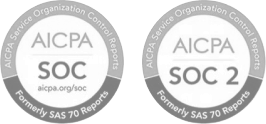Form 1065
Article Navigation
Form 1065, officially titled “U.S. Return of Partnership Income,” is an informational tax return used by partnerships to report their income, deductions, gains, losses, and other relevant financial information to the Internal Revenue Service (IRS). Unlike corporations, partnerships are pass-through entities—meaning the entity itself does not pay income taxes. Instead, profits and losses are passed through to individual partners, who report them on their personal tax returns.
The form is mandatory for general partnerships, limited partnerships (LPs), and limited liability partnerships (LLPs), as well as multi-member limited liability companies (LLCs) taxed as partnerships.
Who Must File Form 1065
Any domestic partnership that carries on a trade or business or has income, deductions, or credits must file Form 1065 annually with the IRS, even if it had no income or business activity during the tax year. This includes:
- General partnerships
- Limited partnerships
- Multi-member LLCs electing partnership treatment
- Foreign partnerships with U.S. income or U.S.-based operations
Single-member LLCs do not file Form 1065; they file Schedule C as sole proprietors.
Purpose of the Form
Form 1065 is used to:
- Disclose the financial activities of the partnership
- Allocate profits and losses among partners
- Report tax-related information to the IRS
- Provide each partner with a Schedule K-1, which summarizes their individual share of income, deductions, and credits
The IRS uses the information to verify that each partner has accurately reported their share of partnership activity on their personal return (Form 1040 with Schedule E).
Key Components of Form 1065
- Income and Deductions Section: Reports total partnership income (e.g., gross receipts, interest income) and allowable deductions (e.g., salaries, rent, depreciation, business expenses).
- Schedule B: Provides detailed information about the structure and operations of the partnership, including ownership details, accounting methods, and foreign transactions.
- Schedule K: Consolidates the partnership’s total income, credits, and deductions to be split among partners.
- Schedule K-1 (Form 1065): Each partner receives a Schedule K-1, showing their distributive share of the partnership’s financial activity. This is used for individual income tax filing.
- Balance Sheets (Schedule L): Reports the beginning and end-of-year balances for assets, liabilities, and capital accounts.
- Analysis of Net Income (Schedule M-1): Reconciles the financial statement income with the tax return income.
Deadlines and Filing Requirements
- Filing Deadline: March 15 for calendar-year partnerships, or the 15th day of the third month after the end of the partnership’s fiscal year.
- Extension: Partnerships can request a six-month extension by filing Form 7004.
- Penalties: Late filing penalties are assessed per partner, per month. Inaccurate or missing Schedule K-1s can also result in fines.
Electronic Filing
As of recent IRS regulations, partnerships with more than 100 partners are required to file Form 1065 electronically. Smaller partnerships may file via paper or electronically, though the IRS encourages e-filing to reduce errors and speed up processing.
Important Considerations
- No Tax Paid by Partnership: Form 1065 is purely informational; tax liability falls on the partners.
- Self-Employment Taxes: General partners are subject to self-employment tax on their share of earnings.
- Passive Activity Rules: Partners may be subject to limitations on losses if they don’t materially participate in the business.
- Basis Tracking: Partners must track their adjusted basis in the partnership to determine gain/loss on distributions or sale of partnership interest.
Form 1065 vs. Corporate Tax Returns
Unlike corporations that file Form 1120 and pay taxes directly, partnerships are pass-through entities with no entity-level tax. The compliance obligations of partnerships therefore center around documentation, allocation accuracy, and partner reporting.
Conclusion
Form 1065 is a central element of tax compliance for partnerships in the U.S. tax system. While the form itself does not trigger a tax bill, the accuracy of its completion directly affects the tax obligations of each partner. Businesses organized as partnerships must ensure timely filing, correct preparation of Schedule K-1s, and consistent recordkeeping to avoid IRS penalties and ensure full compliance.































 Back
Back